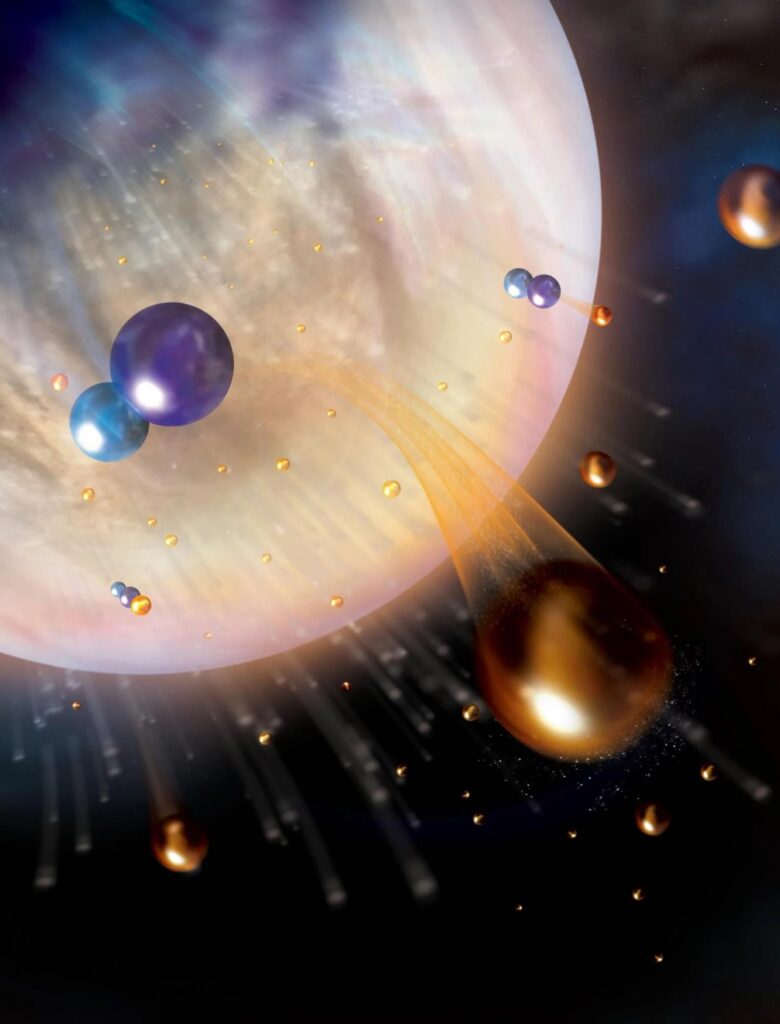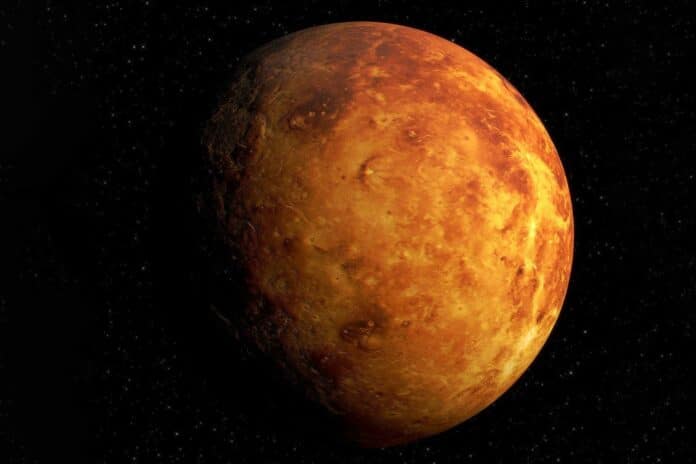Venus, the Earth’s twin, is the same size and source material as Earth. However, Venus has 100,000 times less water than the Earth, even though it’s the same size and mass.
Using computer simulations, planetary scientists at the University of Colorado Boulder shed light on Venus’s water story and discovered how it became so dry.
The computer simulations suggest that Venus is losing almost twice as much water per day as previously thought due to “dissociative recombination,” which sends hydrogen atoms in the planet’s atmosphere hurtling into space.
The computer models that scientists used offer a better understanding of Venus as a gigantic chemistry laboratory. They focus on various reactions that take place in the planet’s swirling atmosphere. According to the researchers, Venus’s escaping water may be caused by a molecule called HCO+, which is an ion composed of one hydrogen atom, one carbon atom, and one oxygen atom that is present high in the planet’s atmosphere.
For Cangi, co-lead author of the research, the findings reveal new hints about why Venus, which probably once looked almost identical to Earth, is all but unrecognizable today.

“We’re trying to figure out what little changes occurred on each planet to drive them into these vastly different states.”
“Venus wasn’t always such a desert.”
Scientists reckon that billions of years ago, during Venus’ formation, the planet got a similar amount of water as Earth. But then, something went wrong. Venus’s atmosphere was filled with thick clouds of carbon dioxide, creating the most intense greenhouse effect in our solar system. As a result, surface temperatures soared to a scorching 900 degrees Fahrenheit. In the process, Venus’ water evaporated, turning into steam, with much of it disappearing into space.
However, more than this, ancient evaporation is needed to explain why Venus is so bone-dry today or how it keeps losing water out into space.
Michael Chaffin, co-lead author of the study and a research scientist at LASP, said, “As an analogy, say I dumped out the water in my water bottle. There would still be a few droplets left. On Venus, however, almost all of those remaining drops also disappeared. The culprit, according to the new work, is elusive HCO+.”
HCO+ is formed in planetary upper atmospheres when water mixes with carbon dioxide. A previous study also reported that the molecule may be responsible for Mars losing a big chunk of its water.
So, here’s how things go down on Venus: HCO+ is constantly produced in the atmosphere, but those individual ions don’t last very long. You see, electrons in the atmosphere stumble upon these ions and combine with them, causing them to split in two. And what happens next? Hydrogen atoms zoom away, and some even escape into space, leaving Venus without one of the key ingredients for water.
In this new study, the scientists did calculations and figured out that the only way to explain Venus’ dry state is if the planet has way more HCO+ in its atmosphere than we thought. But here’s the kicker: no one has seen HCO+ around Venus. Why? According to Chaffin and Cangi, we never had the right tools to look for it properly.
“One of the surprising conclusions of this work is that HCO+ should be among the most abundant ions in the Venus atmosphere,” Chaffin said.
Journal Reference:
- Chaffin, M.S., Cangi, E.M., Gregory, B.S. et al. Venus water loss is dominated by HCO+ dissociative recombination. Nature (2024). DOI: 10.1038/s41586-024-07261-y
